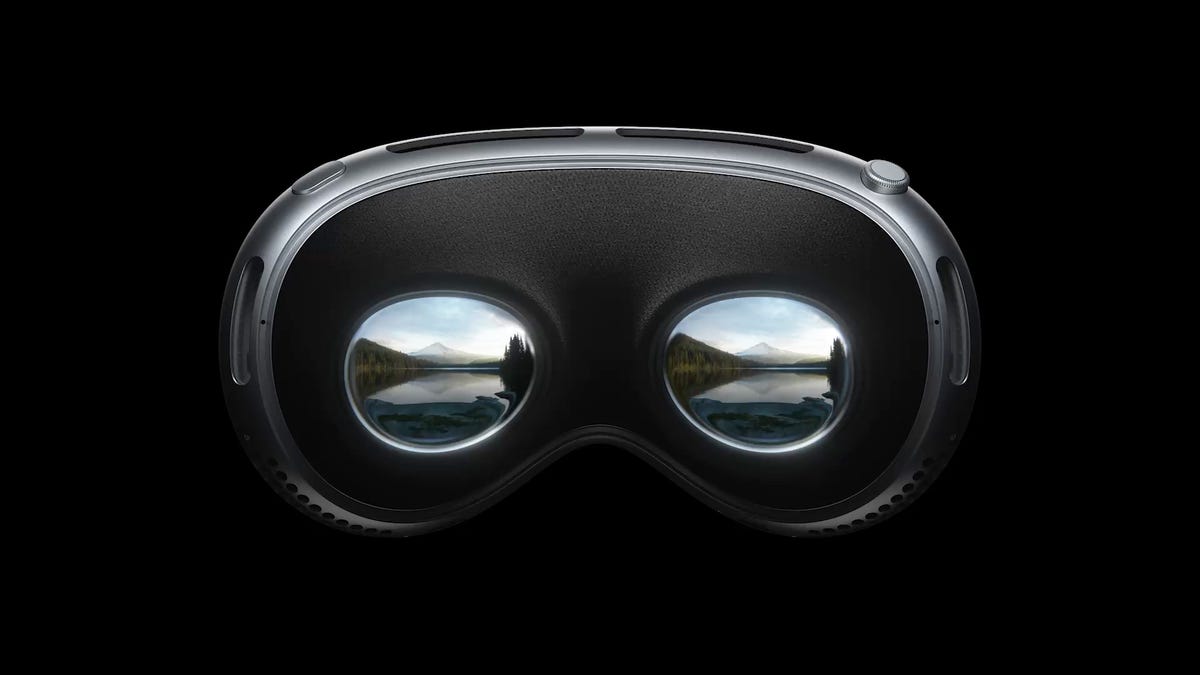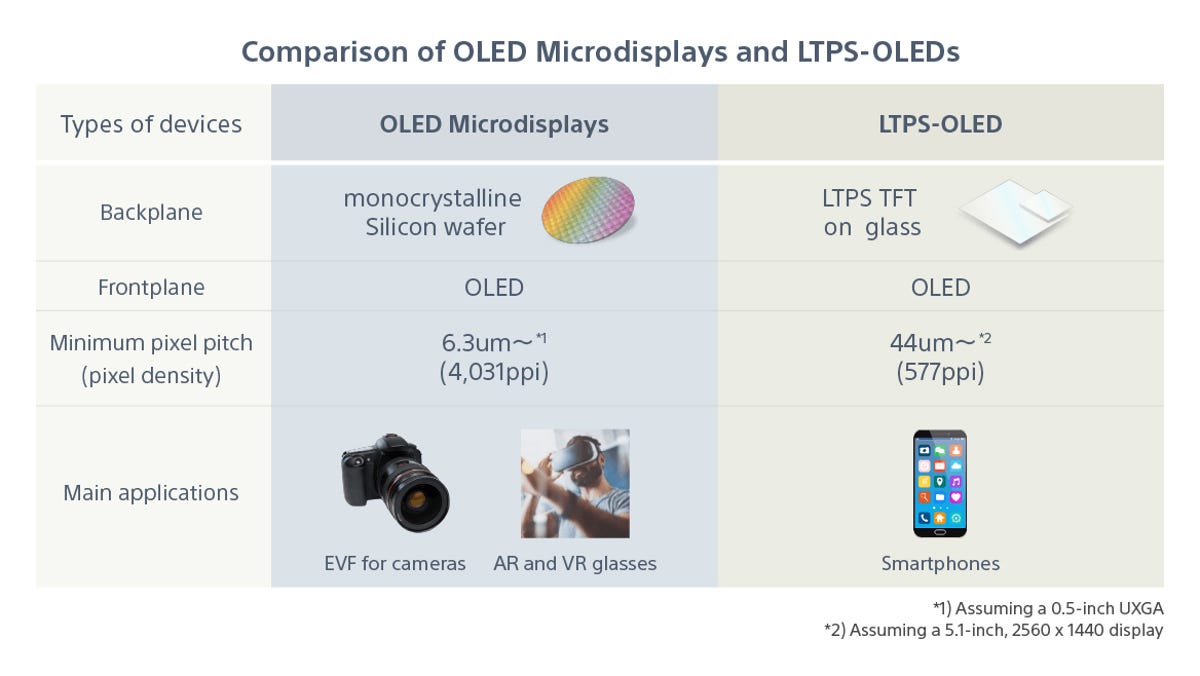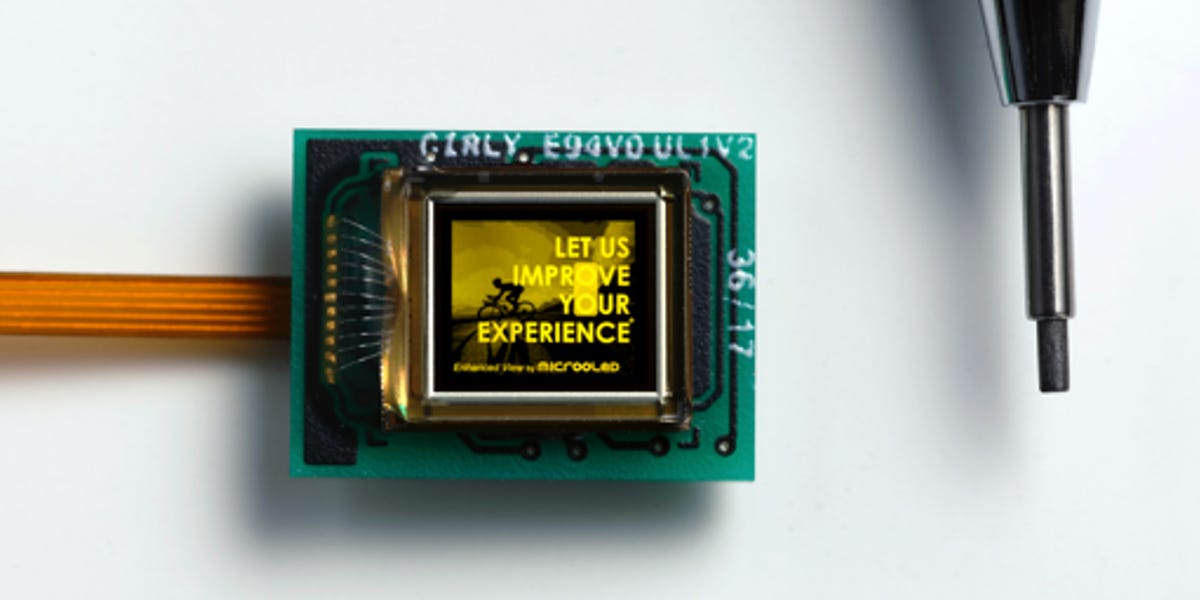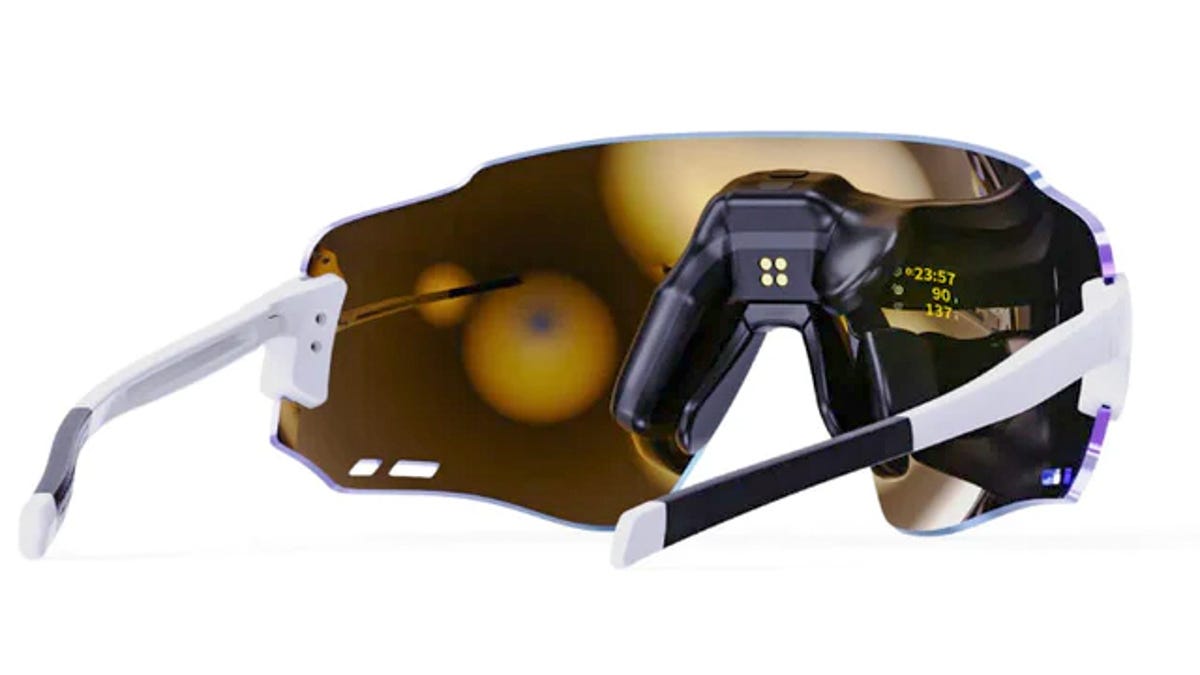Technologies
What is Micro-OLED? Apple Vision Pro’s Screen Tech Explained
The microscopic version of the beloved display tech winds up the pixels per inch to insane levels. Here’s why Apple and others are so excited about this new version of OLED.

At WWDC 2023, Apple announced the Vision Pro AR/VR headset, which offered an impressive amount of technology and an equally imposing $3,500 price tag. Yet, one of the things that helps the Vision stand out from cheaper products from Valve and Meta is the use of a new type of display called micro-OLED. More than just a rebranding by the marketing experts at Apple, micro-OLED is a variation on the screen technology which has become a staple of best TV lists over the last few years.
Micro-OLED’s main difference from «traditional» OLED is right in the name. Featuring far smaller pixels, micro-OLED has the potential for much, much higher resolutions than traditional OLED: think 4K TV resolutions on chips the size of postage stamps. Until recently, the technology has been used in things like electronic viewfinders in cameras, but the latest versions are larger and even higher resolution, making them perfect for AR and VR headsets.
Here’s an in-depth look at this tech and where it could be used in the future.
What’s OLED?
OLED stands for Organic Light Emitting Diode. The term «organic» means the chemicals that help the OLED create light incorporate the element carbon. The specific chemicals beyond that don’t matter much, at least to us end-users, but suffice it to say when they’re supplied with a bit of energy, they create light. You can read more about how OLED works in What is OLED and what can it do for your TV?.

The basic differences between micro-OLED and «traditional» OLED.
The benefit of OLED in general is that it creates its own light. So unlike LED LCD TVs, which currently make up the rest of the TV market, each pixel can be turned on and off. When off, they emit no light. You can’t make an LED LCD pixel totally dark unless you turn off the backlight altogether, and this means OLED’s contrast ratio, or the difference between the brightest and darkest part of an image, is basically infinite in comparison.
OLED TVs, almost all manufactured by LG, have been on the market for several years. Meanwhile, Samsung Display has recently introduced OLED TVs that also feature quantum dots (QD-OLED), which offer even higher brightness and potentially greater color. These QD-OLEDs are sold by Samsung, Sony, and, in computer monitor form, Alienware.
Micro-OLED aka OLED on Silicon

The layers of a micro-OLED display.
Micro-OLED, also known as OLEDoS and OLED microdisplays, is one of the rare cases where the tech is exactly as it sounds: tiny OLED «micro» displays. In this case, not only are the pixels themselves smaller, but the entire «panels» are smaller. This is possible thanks to advancements in manufacturing, including mounting the display-making segments in each pixel directly to a silicone chip. This enables pixels to be much, much smaller .

Two Sony micro-OLED displays. They look like computer chips because that’s what they’re based on.
If we take a look at Apple’s claims, we can estimate how small these pixels really are. Firstly, Apple says the twin displays in the Vision Pro include «More pixels than a 4K TV. For each eye» or «23 million pixels.» A 4K TV is 3,840×2,160, or 8,294,400 pixels, so that should equate to around 11,500,000 pixels per eye for the Apple screens.
Next, Apple partnered with Sony (or maybe TSMC) to create these micro-OLED displays and they are approximately 1-inch in size. To calculate the size of each pixel I’m going to use 32-inch 4K TVs as a comparison, and these boast about 138 pixels per inch (ppi). We don’t know the aspect ratio of the chips in the Vision Pro, but if they’re a square 3,400×3,400 resolution that would be a total of 11,560,000 pixels, so that’s a safe bet. So, if that’s the case, these displays have a ppi of around 4,808(!) and that’s more than almost anything else on the market, and that’s by a lot. Even the high-resolution OLED screen on the Galaxy S23 Ultra has a ppi of «only» 500. Regardless of the panel’s production aspect ratio, the ppi is going to be impressive. Apple didn’t respond immediately to CNET’s request for clarification.
AR and VR microdisplays are so close to your eyes that they need to be extremely high performance in order to be realistic. They need extreme resolution so you don’t see the pixels, they need high contrast ratios so they look realistic, and they need high framerates to minimize the chance of motion blur and motion sickness. In addition, being in portable devices means they need to be able to do all that with low power consumption. Micro-OLED seems able to do all of these, but at a cost. Literally a cost. The Vision Pro is the most high-profile use of the high-end of the technology and it costs $3,500.

A monochrome micro-OLED display from the company Microoled, one of the largest manufactures of micro-OLED displays. On the right is the tip of a mechanical pencil.
The Micro-OLED technology isn’t particularly new, having been available in some form for over a decade. Sony has been using them in camera viewfinders for several years, as have Canon and Nikon. Like all display techs, however, micro-OLED has evolved quite a bit over the years. The displays in the Vision Pro, for instance, are huge and very high resolution for a micro-OLED display.

A high-resolution color micro-OLED display by the company Microoled.
How is micro-OLED different from MicroLED? Despite the fact that they’re written slightly differently, they are superficially similar in the way they are both self-emitting, or can make their own light. But on a more in-depth level, the differences between the carbon-based OLED and the non-carbon LED are sadly beyond the scope of this article. Suffice it to say right now, MicroLED is better suited for large, wall-sized displays using individual pixels made up of LEDs. Micro-OLED is better suited for tiny, high-resolution displays. This isn’t to say that MicroLED can’t be used in smaller displays, and we’ll likely see some eventually. But for now they’re different tools for different uses.
The future is micro?

The ENGO 2 eyeware uses a tiny micro-OLED made by the company Microoled. The display reflects off the inside of the eyeware to show you your speed, time, direction and other data. Basically anything an athlete would need for better training, but instead of on a watch or phone, it’s projected in real time in front of you. Essentially, a heads-up display built into sunglasses.
Where else will we see micro-OLED? At MWC 2023, Xiaomi announced its AR Glass Discovery Edition featured the technology, and future high-end VR headsets from Meta, HTC and others will likely use it. Currently, a company named Engo is using a tiny micro-OLED projector to display speed and other data on the inside of its AR sunglasses. I know I sure don’t need these, but I want them. Then there’s the many mirrorless and other cameras that have been using micro-OLED viewfinders for years.
Could we see ultra-ultra-ultra high-resolution TVs with this new technology? Technically, it’s possible but highly unlikely. Macro micro-OLED is just OLED. The resolutions possible using more traditional OLED manufacturing are more than enough for a display that’s 10 feet from your eyeballs. However, it’s possible micro-OLED might find its way into wearables and other portable devices where its size, resolution and efficiency will be an asset. That’s likely why LG, Samsung Display, Sony and others are all working on micro-OLED.
Will ultra-thin, ultra-high resolution micro-OLED displays compete in a market with ultra-thin, ultra-high resolution nanoLED? Could be. We shall see.
As well as covering TV and other display tech, Geoff does photo tours of cool museums and locations around the world, including nuclear submarines, massive aircraft carriers, medieval castles, epic 10,000-mile road trips and more. Check out Tech Treks for all his tours and adventures.
He wrote a bestselling sci-fi novel about city-size submarines and a sequel. You can follow his adventures on Instagram and his YouTube channel.
Technologies
The Sequel to Subway Surfers Is Launching in February, and You Can Preregister Now
Subway Surfers was the most downloaded game of the 2010s, so the sequel has some big shoes to fill.

Of all the mobile games ever released, none of them is as popular as Subway Surfers. The iconic endless runner has put up 4.5 billion downloads since its initial release in 2012. After 14 years of unprecedented success, developer SYBO Games is ready to turn the page with the release of a sequel, Subway Surfers City.
SYBO says the game is set to launch on Feb. 26, and it’s available for preregistration on Google Play and iOS right now. SYBO also released a cinematic trailer showing off some new characters and environments.
The sequel features a new metropolis location with four districts to play through at launch, including The Docks, Southline, Sunrise Blvd and Delorean Park, along with four new characters. SYBO says that fresh content will be released every season, including new parts of the city to explore and a variety of cosmetic goodies to unlock.
Don’t miss any of our unbiased tech content and lab-based reviews. Add CNET as a preferred Google source.
Based on the game’s screenshots, SYBO isn’t deviating too much from the core ideas of the original game, showing characters getting spotted, adding graffiti to a subway tunnel and mercilessly chased by The Guard and his dog until they’re caught.
Subway Surfers City will have several new mechanics that aren’t recycled from the old game, including a stomp mechanic that’ll unlock secrets and alternate paths.
The game also adds some new modes, including a finite runner mode where you can tour through the various environments to achieve specific goals, and an Events mode that will challenge you to a rotating gauntlet of missions. The Classic Endless mode makes its return to the new game, as does the ability to play the game offline, two things players loved about the original Subway Surfers.
Subway Surfers City will be free to play with in-app purchases, just like its predecessor.
Some big shoes to fill
Releasing a sequel that’s as beloved as the original will be tough, and SYBO has its work cut out for it. The original Subway Surfers was released in 2012, and while it’s not necessarily known for popularizing the genre of endless runner (that title goes to Temple Run), it quietly took over as the de facto leader in the genre.
Angry Birds was the first mobile franchise to surpass 1 billion downloads, a feat it accomplished in 2012 across its various games. Subway Surfers was the first to do it in a single game, accomplishing the feat in 2015. It later became the first game to hit 1 billion on the Google Play Store in 2018. It was likely the first game to hit 2 billion downloads, and was definitely the first to hit 3 billion and 4 billion. No other mobile game has ever reached 4 billion downloads.
According to SYBO, Subway Surfers has amassed 4.5 billion downloads as of Jan. 2026 and still boasts millions of monthly active players, despite being nearly a decade and a half old.
Its popularity has remained steady in modern times after many creators started using Subway Surfers gameplay as b-roll in their TikTok videos, a tactic that has been repeated by a professor at the University of California, San Diego during his lectures, which caused his registration rates to skyrocket. Starbucks got in on it with a game that had players collect Starbucks coffee cups for prizes.
Over two dozen companies and celebrities have done events for the game, including Demi Lovato, Walmart, the NFL Players Association and, arguably most famously, Burger King, which helped the game celebrate its 10th birthday with the Burger King Challenge. The prize for that challenge was unlocking the Burger King himself.
There aren’t many niches in gaming where Subway Surfers isn’t present. On top of its massive amount of downloads and use in social media videos, Subway Surfers is also one of the most popular games of all time for speedrunners, and by far the most popular such game for mobile.
The shoes the sequel needs to fill couldn’t be larger, but SYBO believes it’s up to the challenge.
«At its core, Subway Surfers City is the next chapter of Subway Surfers’nearly 15-year-long legacy,» said Mathias Gredal Nørvig, CEO of SYBO.»Subway Surfers City stars reimagined fan-favorite characters, whilesimultaneously introducing never-before-seen content and mechanics. It’sa balance of the classic game our players know and love, with a freshvibrancy that brings the crew’s universe to life in a whole new way.»
Technologies
Black Ops 7 Quad Feed Double XP Weekend Is Live Now
Get a head start on the latest content in Black Ops 7 Season 1 Reloaded with a healthy heaping of double XP rewards.

Call of Duty: Black Ops 7 developer Treyarch is showing some love to loyal players with a double XP weekend in honor of the Zombies-themed 115 Day celebration. The latest double XP weekend is live now, with all four boosts active for players to take advantage of. You’ll be able to speed through account levels, weapon attachment unlocks and battle pass tiers to chug through the latest seasonal content during this event. This double XP weekend runs from Thursday, Jan. 15, to Tuesday, Jan. 20.
Anyone playing Black Ops 7 during the event period has a universal double account XP, weapon XP, battle pass XP and GobbleGum earn rate applied to their account. If you log in now, you can hop into battle and reap the rewards of this double XP weekend right away.
This is a Quad Feed double XP weekend — a tradition started with last year’s release, Black Ops 6. That means players will be able to benefit from all four customary double XP weekend boosts at the same time. Your double XP tokens will also be locked for the duration of the event.
Here’s everything you need to know about this double XP weekend. If you’re looking for something else to play, see our recommendations for the best game subscription services.
When does the double XP weekend start in Call of Duty: Black Ops 7?
This double XP weekend kicked off Thursday at 1 p.m. ET and is currently live now.
Not sure when the double XP weekend went live for you? Here’s when the event started in your time zone:
- ET: Jan. 15 at 1 p.m.
- CT: Jan. 15 at noon.
- MT: Jan. 15 at 11 a.m.
- PT: Jan. 15 at 10 a.m.
It’s always worth starting your game ahead of your gaming session if possible. As with every Black Ops 7 patch, the update is going to require you to download new content and restart the application.
When does the double XP weekend end in Call of Duty: Black Ops 7?
Some double XP «weekends» are much longer events, lasting five to seven days. The current double XP weekend isn’t nearly that long. This double XP weekend will end on Tuesday. Your double XP tokens will once again unlock after this time.
Here’s when the double XP weekend will end in your time zone:
- ET: Jan. 20 at 1 p.m.
- CT: Jan. 20 at noon.
- MT: Jan. 20 at 11 a.m.
- PT: Jan. 20 at 10 a.m.
Does Call of Duty Warzone have double XP this weekend?
Call of Duty Warzone has a double XP weekend running in tandem with Black Ops 7. That means Warzone players will also be able to benefit from this boost by leveling up their account, weapons and battle passes at twice the normal speed.
New players have a chance to level up the weapons they unlock from the new and improved Warzone Armory, and returning players can continue unlocking new attachments for the suite of Black Ops 7 weaponry added to Warzone.
Black Ops 7 double XP FAQ
Technologies
Switching to T-Mobile’s Better Value Family Plan Could Save You Over $1,000 Per Year
With three or more lines, you get great benefits like free streaming services, satellite connectivity and more.

If you’re looking to cut down on your monthly cell bill, you may want to switch to T-Mobile. Starting at just $140 per month, its new Better Value family plan is already cheaper than some competitors. Plus, it comes with a range of free services and benefits that can save you up to $1,000 per year compared to AT&T or Verizon.
It’s important to note that you need at least three lines of service to be on this plan. If you’re switching from another carrier, you’ll need to port in at least two existing numbers. T-Mobile is also offering a five-year price guarantee, so you don’t have to worry about unexpected costs down the line.
In addition to unlimited 5G data and 250GB of hotspot data every month, the Better Value family plan comes with all kinds of other benefits. You’ll get T-Satellite for free, which uses the Starlink network for unlimited texting and data on specific apps. Other benefits include 30GB of data while abroad in over 215 countries, as well as a free Netflix and Hulu subscription.
Why this deal matters
The benefits you get with T-Mobile’s new Better Value family plan can save you more than $1,000 per year compared to AT&T and Verizon. You can only sign up for a limited time, however, so take advantage of these savings while you can.
-

 Technologies3 года ago
Technologies3 года agoTech Companies Need to Be Held Accountable for Security, Experts Say
-

 Technologies3 года ago
Technologies3 года agoBest Handheld Game Console in 2023
-

 Technologies3 года ago
Technologies3 года agoTighten Up Your VR Game With the Best Head Straps for Quest 2
-

 Technologies4 года ago
Technologies4 года agoBlack Friday 2021: The best deals on TVs, headphones, kitchenware, and more
-

 Technologies4 года ago
Technologies4 года agoGoogle to require vaccinations as Silicon Valley rethinks return-to-office policies
-

 Technologies5 лет ago
Technologies5 лет agoVerum, Wickr and Threema: next generation secured messengers
-

 Technologies4 года ago
Technologies4 года agoOlivia Harlan Dekker for Verum Messenger
-

 Technologies4 года ago
Technologies4 года agoiPhone 13 event: How to watch Apple’s big announcement tomorrow
